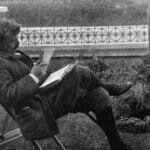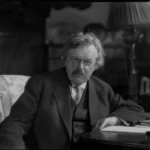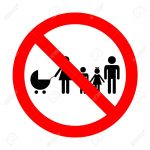The Fallout from Divorce
The number of divorces has quadrupled in Australia over the past twenty years. Last year Australia had the highest divorce rate since no-fault divorce laws were introduced in 1976. We have also recorded the lowest number of marriages per capita this century. Last year Australia had the third-highest divorce rate in the world (2.9 per 1000), just behind America (4.6) and the United Kingdom (3.0).
These figures, gleaned from the latest report of the Australian Bureau of Statistics, make for grim reading. Do these figures spell the end of marriage, and the onset of a permanent culture of divorce? Is the institution of marriage beyond repair, destined for the scrapheap of history?
While the trends would seem to indicate that marriage is indeed on the way out, polls continue to tell us that most people look to marriage as an ideal. Moreover, for the majority of Australians, marriage is still the norm. The latest ABS figures, along with data from the 1996 census, show that 42 per cent of all Australians are married, 2.7 per cent are separated, and 5.1 per cent are divorced. Marriage, in other words, is still an important choice for many Australians.
The recent trends however, unless slowed or reversed, will only lead to greater social decay in Australia. We know quite certainly now that as family disintegration increases, social fragmentation follows suit. Everyone suffers as a result. Children are clearly a big loser in divorce. But both parents are also negatively impacted. Many studies have shown the downside to women who divorce. Economic hardship is one of the main areas. Indeed, we now speak of the “feminization of poverty” to describe the economic problems single mums experience.
Less well known however is the harm divorce brings not only to fathers, but to the very idea of fatherhood. Indeed, divorce has had a very devastating impact, resulting in the general erosion of fatherhood both as a concept and a norm in society. As Dr David Blankenhorn argues so cogently in his important book, Fatherless America, the very ideal of fatherhood is under siege today. Not only are large numbers of fathers simply absent today, but fathers are increasingly seen as expendable – or as part of the problem.
Many fathers feel that they are getting a bad deal in divorce settlements. Now I hear from enough aggrieved men and women to know that everyone suffers in a divorce. Whether men suffer more is a moot point. We do know a few facts however. Most divorces are initiated by women. And in the overwhelming majority of cases, most mums get access to the kids. One can understand why many men are disinterested in funding the ex, often along with the new boyfriend, while having difficulty seeing the kids, either because of restraining orders or poorly enforced access orders.
The recent reforms to the Family Law Act, which were meant to allow greater access to children by both parents, were supposed to go some way toward bringing more fairness in divorce proceedings. Many of these reforms were meant to be “child-friendly”, to create as best as possible a conducive environment in which the parents and children could amicably get along, post-divorce. While commendable, this attempt to make divorce user-friendly raises an interesting point. As Blankenhorn has commented, “Here we approach the ultimate futility – and irony – of the better-divorce idea. Its central recommendation to divorcing parents can be summed up simply. Get divorced, but not too divorced. Divorce each other, but keep your child’s life as undivorced as possible. Break the bond with your spouse, but keep your bond with your co-parent. The trick for men is to split themselves psychologically into two parts. The husband part moves out, frequently to be replaced by another man, while the father part seeks, as best he can, to remain.” Yet here is the ultimate irony: “The ‘better’ a divorce looks, the more it looks like, well, marriage. Living near each other. Cooperating. Communicating. . . . It all sounds like a good-enough marriage, minus the sex.”
What we desperately need to recover today, is not only the idea of fatherhood, not only the idea of parenthood, but the very idea of marriage. Today we live in a culture of divorce. Marriage as an ideal has been supplanted by divorce as the ideal. Historian Lawrence Stone, in his Road to Divorce, describes this transformation of Western societies from “largely non-separating and non-divorcing” to “separating and divorcing” ones as “perhaps the most profound and far-reaching social change to have occurred in the last five hundred years.”
Marriage is about the only contract that I know of that can be broken unilaterally and without penalty. It is harder to break an employment contract than it is to opt out of a marriage. Indeed, Australia’s twenty-year experiment with no-fault divorce is hardly encouraging. The idea of no-fault tells us that, when a marriage ends, no one is to blame. People change, people grow apart, and they must be allowed to pursue their own happiness. No-fault terminology tells us that marriage is essentially a private matter, designed for the fulfilment of the individual spouses. As sociologist Barbara Whitehead puts it, “Other prospective stakeholders in the relationship – such as children or the society as a whole – are understood to be at best minority shareholders whose claims are effectively without standing and therefore unenforceable”.
These ideas stand in sharp contrast to the common wisdom of our parents’ generation, perhaps best summarised in a famous essay by Roscoe Pound, who insisted that family law “must distinguish the individual interests in domestic relations from the social interest in the family and marriage as social institutions.” This social interest, Pound argued, is twofold: “the maintenance of the family as a social institution” and “the protection of dependent persons, in securing to all individuals a moral and social life and in the rearing and training of sound and well-bred citizens for the future.”
To turn the culture of divorce around will not be easy, but I believe it can be done. Other social behaviours have been turned around. Consider the case of smoking. Thirty years ago some 60% of all adults and young people were smokers. Today the figure is around 25%. What caused this reversal? Health warnings, advertising bans, education campaigns, even a social stigma which made people feel guilty, at least in public, of continuing in such behaviour. Perhaps the same needs to be done with “easy divorce”.
Reintroducing fault may or may not be viable. Whichever way we go, the solutions will not be easy. And such proposals for change will not be panaceas. But what we have at the moment is no panacea either. John Locke once called marriage humankind’s “first society”. The more we tinker with this first society, the more the extended society will suffer.
[1141 words]




















Hi Bill,
I was reading this perhaps old article of yours today. Years ago I had copied it to my computer and I still have the file because marriage is such a critical subject! I do like your idea on education campaigns against easy divorce. If divorce was eliminated, so much social ill would go with it.
I believe marriage is critical because it is designed to reflect the nature of God.
David Clay, Darwin